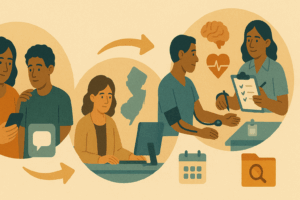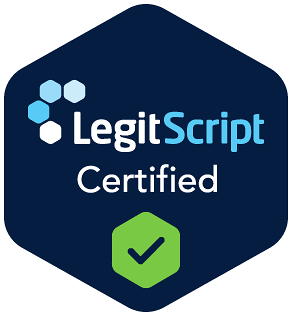Recovery is not one leap. It is a clear set of steps you can follow. First, you reach out and get a complete assessment that looks at substance use, mental health, safety, and your daily life. Then you match to the right level of care, often outpatient or intensive outpatient, so you can keep work, school, and family on track. Next, addiction treatment builds skills using proven therapies such as CBT, motivational interviewing, and contingency management. If trauma or PTSD are part of your story, treatments like EMDR can help. For some people, medications also support recovery and reduce risk. Family sessions and peer support add strength. Your plan updates as you grow, and privacy is protected under HIPAA. Look for quality signals, such as Joint Commission accreditation. If you live in New Jersey, there are state resources available to connect you with help quickly. Keep reading to see each step in plain language, with simple checklists you can use today. Ready to see how this can work for your life? Keep reading.
Step 1: Reach out and get a thorough assessment

The first step is to speak with a licensed professional. They will ask about your substance use, mental health, safety, medical needs, and your weekday life. The goal is to make a plan that fits you, not to judge you. This assessment often uses national placement standards to match care to need, not to a one-size-fits-all path.
You may also discuss withdrawal risks, cravings, and triggers. If you have anxiety or depression, that is part of the plan. Many people in New Jersey begin with a brief phone screen, followed by an in-person or virtual assessment within a few days. If you prefer, you can also contact state help lines that connect you to care.
- Bring meds, doctor info, and any past treatment notes.
- Be honest about use, mental health, and safety.
- Ask how scheduling works with work or classes.
- Ask how the team will measure progress.
- Ask about privacy and your rights.
Step 2: Match to the right level of care
The level of care should match your needs. Many adults near New Jersey choose intensive outpatient or standard outpatient programs so they can live at home and continue with their daily duties. When symptoms are higher, a partial program or a short residential stay may be best. National criteria guide these choices to improve safety and results
Your level of care can step up or down over time. That is normal. The aim is steady progress with the least disruption to your life while keeping you safe and supported.
- Outpatient: 1 to 3 visits per week for therapy and skills.
- Intensive outpatient: multiple days per week with group and individual work.
- Partial hospitalization: full-day care while you sleep at home.
- Residential: 24-hour support for a period of time.
- Telehealth options may support access.
Step 3: Stabilize early and build a safety plan
Early work focuses on safety, cravings, sleep, and stress. You will learn how to handle high-risk moments. You will plan what to do if urges spike. Some people benefit from medications that reduce withdrawal or cravings and lower risk. This is part of evidence-based care.
If opioids are involved, medications like buprenorphine, methadone, or naltrexone may be recommended. These medicines are proven to save lives and support recovery. If alcohol is involved, FDA-approved options include naltrexone, acamprosate, and disulfiram. Your clinician will explain risks and benefits and help you decide.
- Ask about a written relapse prevention plan.
- Learn urge surfing and grounding skills.
- Set up safe contacts for challenging moments.
- Review medication options if appropriate.
- Plan sleep, meals, and movement each day.
Step 4: Work the core therapies that help change stick
You will learn skills that help you think and act in new ways. Cognitive behavioral therapy enables you to spot thought patterns and triggers and practice new responses. Motivational interviewing strengthens your own reasons to change. Contingency management uses small rewards to reinforce healthy steps. These methods have strong support in research.
You will likely join small groups and have one-to-one sessions. Sessions are practical and focused on your life. You will practice coping skills, emotion regulation, and problem-solving. The goal is to build daily habits that protect your recovery.
- CBT skills: trigger mapping, thought checks, coping plans.
- MI skills: explore values, resolve ambivalence, set goals.
- CM ideas: track streaks, earn rewards for healthy steps.
- Skills for sleep, stress, and mood.
- Practice plans for weekends and holidays.
Step 5: Treat co-occurring anxiety, depression, and more
Many adults have both a substance use disorder and a mental health condition. Treating both at the same time is best practice. Integrated care improves outcomes and helps you feel better faster. Your plan can include therapy for mood and anxiety, medication management, and skills to handle panic, worry, or low mood.
Your team will screen for trauma and sleep problems. They will also check for conditions like ADHD or bipolar disorder. Integrated care means you do not have to bounce between providers who do not talk to each other. The same team can coordinate your work so nothing falls through the cracks.
- Ask for integrated addiction treatment, not separate tracks.
- Share all symptoms, even if they feel unrelated.
- Learn skills for anxiety and depression.
- Include family or partner when helpful.
- Review medications and interactions
Step 6: Address trauma and get PTSD support, including EMDR
If trauma is part of your story, care can include trauma-focused therapy. One option is EMDR. Major guidelines suggest EMDR as aaddiction treatment for adults with PTSD. Many people find it helps process distressing memories and reduce symptoms so recovery feels possible.
PTSD support can also include cognitive processing therapy or prolonged exposure. Your team will help you choose. The key is trauma care that moves at your pace and fits within your addiction plan so healing happens on both fronts.
- Ask for a trauma screen early.
- Discuss EMDR for trauma with your therapist.
- Pace the work to protect safety.
- Learn grounding skills for flashbacks.
- Coordinate PTSD care with your recovery plan.
Step 7: Involve family and rebuild trust
Recovery is easier with support. Family or partner sessions can improve communication, reduce conflict, and grow trust. Evidence shows that involving loved ones can boost engagement and outcomes. Your plan can include a couple or family sessions that teach skills and set healthy boundaries.
Family work is not about blame. It is about repair. You will practice clear requests, repair talks, and ways to support sober time without control or shame. Small changes at home often create significant gains in daily life.
- Invite a support person to one session.
- Learn a simple check-in routine at home.
- Agree on safety lines and plans.
- Share wins each week.
- Use community supports for families when needed.
Step 8: Build community and peer support
Many people add peer support to their plan. Mutual help groups and 12-step informed communities can add connection, structure, and hope. They can be a helpful layer next to professional care. Evidence for mutual support is strongest when combined with clinical addiction treatment. Your team can help you find a good fit.
Peer support is flexible. You can try in-person or online. You choose how often to attend. The most important thing is to find a safe space that supports your values and goals. INAAC.
- Sample a few meeting styles.
- Find a sponsor or mentor if you like.
- Keep numbers for sober peers handy.
- Add a weekly check-in after work.
- Celebrate milestones in the community.
Step 9: Expect progress, lapses, and learning
Addiction is a chronic, treatable condition. Return to use can happen, just like flare-ups in other health conditions. A lapse is a signal to adjust the plan, not a moral failure. Your team will help you review triggers, add skills, or change the level of care so you can get back on track.
Setbacks are part of many recovery stories. The key is a fast, kind response. Reach out the same day. Use your safety plan. Update your supports. Effective care adjusts to what you need now.
- Save a same-day contact list in your phone.
- Keep medications and appointments current.
- Rehearse a 3-step plan for tough days.
- Use skills before, during, and after urges.
- Track patterns to learn and plan ahead.
Step 10: Protect your privacy and know your rights
Your health information is protected by federal law known as HIPAA. You control who can see your records, with some limits for safety. Ask your provider to explain how your information is stored and shared. You can request copies of your documents and ask for corrections.
Privacy also covers how digital tools are used. Providers must follow rules that protect your information online and offline. You can ask how portals, telehealth, and tracking technologies are handled. Clear answers can help you feel safe and informed.
- Ask for the Notice of Privacy Practices.
- Learn how consent works for sharing info.
- Ask how your data is protected online.
- Keep your own records in a safe place.
- Speak up if something looks wrong.
Step 11: Look for quality signals, like Joint Commission accreditation
Quality programs follow proven standards and keep improving. One signal is accreditation by The Joint Commission for behavioral health. This process reviews safety and quality systems on a regular cycle. It helps programs measure and improve care. You can ask any provider if they are accredited the.
Accreditation is not the only marker, but it is a strong one. Also look for licensed staff, evidence-based therapies, outcome tracking, and paths for family involvement. These signs point to a program that takes quality seriously.
- Ask about accreditation and licensing.
- Ask which therapies are evidence-based.
- Ask how progress is measured.
- Ask about trauma and co-occurring care.
- Ask about flexible schedules and step-down plans.
Step 12: Plan your weeks so the addiction treatment fits real life
Adults in New Jersey often need care that works with jobs, classes, kids, and commutes. Intensive outpatient programs usually run on set blocks during daytime or evening hours. Outpatient sessions can be scheduled around busy periods. Your team will help you set a routine that reduces stress.
If you live anywhere on the East Coast and commute to New Jersey or nearby towns, plan travel time, child care, and meals. Many people also use telehealth when needed. A simple weekly plan lowers friction and helps you show up
- Pick session blocks that fit your job.
- Batch errands on off days.
- Arrange child care or rides early.
- Pack a simple snack and water.
- Use reminders on your phone.
Step 13: Use New Jersey resources to get help fast
New Jersey offers a statewide helpline that connects residents to treatment and support. ReachNJ can help you find services, including outpatient and intensive outpatient options, and is available to take calls 24 hours a day. You can also explore options through the Division of Mental Health and Addiction Services.
If you are not sure where to start, call ReachNJ, talk to your primary care provider, or search the federal treatment locator. These services are free and confidential. They can help you check fit and start the next step.
- ReachNJ helpline: 1-844-REACHNJ.
- NJ DMHAS consumer resources and services.
- SAMHSA’s FindTreatment.gov locator.
- Ask about insurance verification to reduce delays.
- Ask for a fast phone consult to get moving.
Step 14: Know what “evidence-based” really means.
Evidence-based means the care is backed by substantial research and national guidance, for substance use disorders, that includes therapies like CBT, motivational interviewing, and contingency management. It also provides for the use of medications when indicated and the integration of care for co-occurring conditions. These tools help people reach stable recovery.
For trauma and PTSD, major guidelines recommend specific therapies, including EMDR. For alcohol and opioid use disorders, federal agencies list the approved medications and explain how they work. When you hear “evidence-based,” these are the kinds of supports it should include.
- Ask your provider which therapies they use and why.
- Ask how they adapt care to your goals.
- Ask how they include family when helpful.
- Ask how they address trauma and mood.
- Ask how they coordinate with your doctor.
Step 15: What results should you expect
Recovery is personal. With the right plan, many people reduce or stop use, improve their mood, and regain daily function. Addiction treatment that matches the level of care and uses proven methods has better odds. If something is not working, the plan should change. That is expected in chronic conditions.
You should expect respect, clear goals, and steady feedback. You should see skills grow and risks drop. You should feel more stable at home, at work, and with family. Keep the focus on progress, not perfection.
- Review goals at set times.
- Track sleep, mood, and cravings.
- Celebrate small wins each week.
- Step down care as you gain stability.
- Keep supports in place after graduation.
FAQs for adults in New Jersey
Can I keep my job or classes while in addiction treatment?
Yes. Outpatient and intensive outpatient are designed for that. Programs offer day and evening times so you can attend while keeping daily life going.
Will my information be private?
Yes. HIPAA sets national privacy standards and gives you rights over your health information. Ask how your provider protects data and how consent works.
What if I worry about relapse?
Relapse does not mean failure. It is a sign to adjust care. Have a plan for hard days.
What if I also have anxiety or depression?
Ask for integrated addiction treatment that addresses both at the same time. This is best practice and improves results.
Is trauma care available?
Yes. PTSD support, including EMDR, can be part of your plan when safe and appropriate
Your next small step
If you are an adult in New Jersey who needs a flexible, evidence-based outpatient path that fits real life, you can start today. Visit bluecrestcounseling.com to verify your insurance or request a quick consult, or call a trusted professional to discuss the right level of care. Your plan can meet you where you are and help you move forward with skill, safety, and hope.




